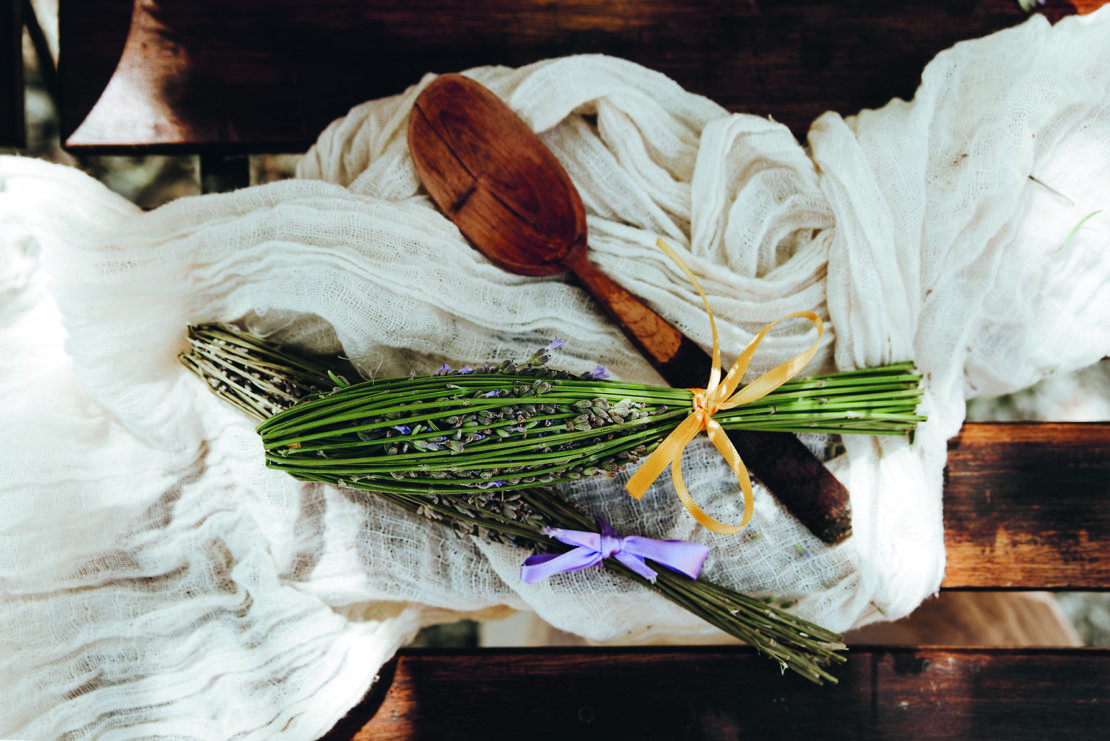
How to Make Lavender Wands
Extract from The Wild Craft by Catarina Seixas, published in 2022 by Hardie Grant Publishing. Photographs © Ana Zilhão
Some years ago, while exploring an old, abandoned house, I opened a drawer and found a lavender wand inside. I brought it up to my nose and instinctively inhaled the sweet fragrance deeply, even though the passing years had faded most of it. There is something so calming about the smell of lavender, and it reminds me of my childhood, my grandparents’ goat-and-lavender-scented home and the traditional practices of using the bounty of the land in the home.
Traditionally, lavender wands have been used across the Mediterranean for perfuming clothes’ drawers, where they also act as a natural moth repellent, and I think it might be time we returned to this practice.
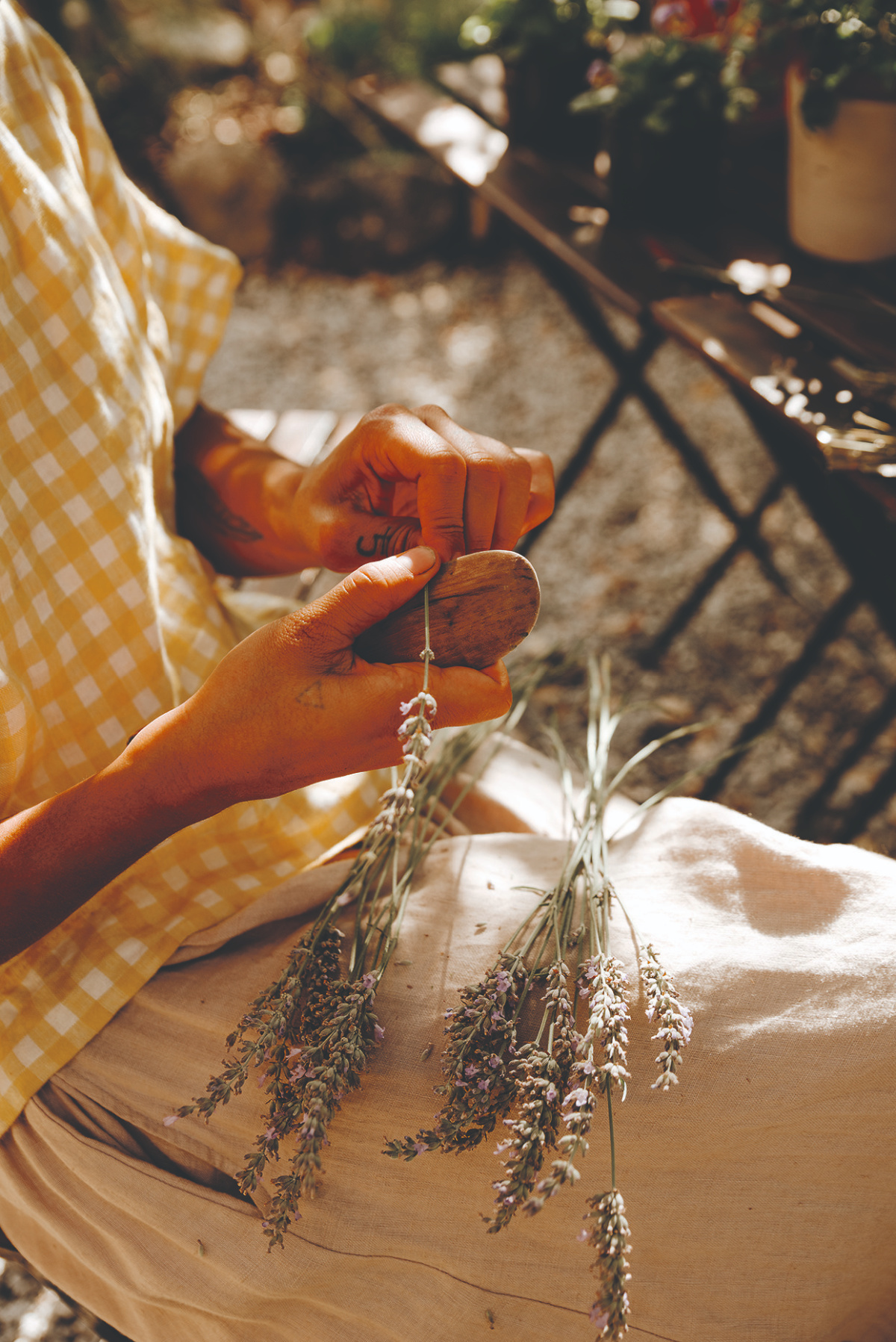
Lavender (Lavandula spp.) blooms during the summer months and should be gathered just before the flowers open. A lavender wand captures the essence of summer for the months to come. It’s such a delight to open a drawer during the cold season and be greeted by the sweet scent of this friendly herb. Lavender, with all its different species, is an easy herb to come by. If you don’t grow lavender, take a peek in your friends’ gardens and balconies, or visit your local garden centre and get yourself a pot or two.
We’re going to look at two different versions of the humble lavender wand here. The first is very simple – the type I found in that old drawer years ago, and which I’ve seen passed down through generations here in Western Iberia. Then we’ll go through a more elaborate, woven version, which most likely has its roots in the South of France.
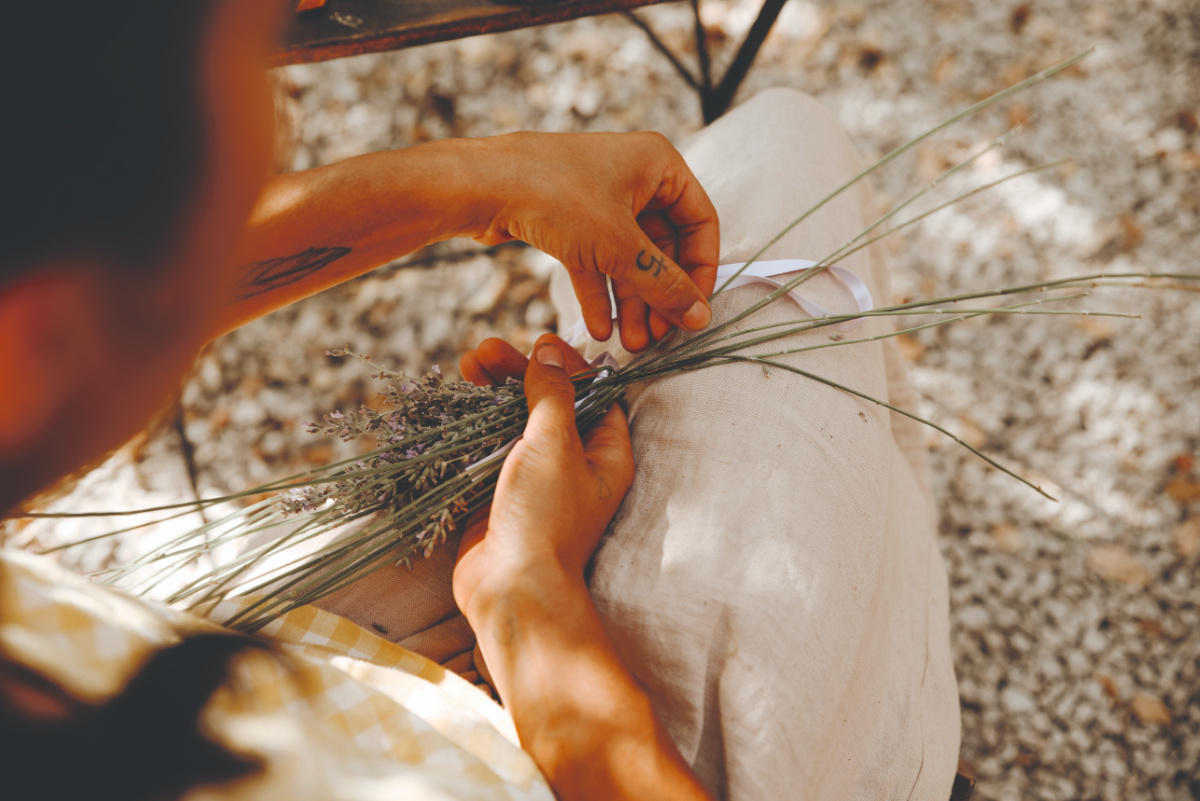
Two Easy DIY Lavender Wands
The Simple Lavender Wand
bunch of freshly cut lavender sprigs with stems at least 20 cm (8 in) long
2 pieces of string or satin ribbon, in a colour of your choice, each 20 cm (8 in) long
scissors
spoon (optional)
- Remove any leaves from each sprig.
- Hold all the sprigs together, aligning the buds. Tie one piece of string or ribbon around the base of the flowers, in a tight knot, and cut the ends.
- Holding the bunch with the flowers pointing down, gently fold each stem over the tied string and the flower heads, as if you were putting the flowers in a cage. Space the stems evenly, being careful not to snap them. I’ve found that pressing the stems together under a spoon before folding helps to loosen the fibres and makes them more pliable.
- Hold the long stems together just below the encased flowers and wrap the second piece of string or ribbon around them a few times before tying a tight knot.
- You may now trim the stems evenly and, if you fancy, tie another knot using a third piece of string or ribbon at the base to make either a bow or a loop, so the wand can be hung in a closet.
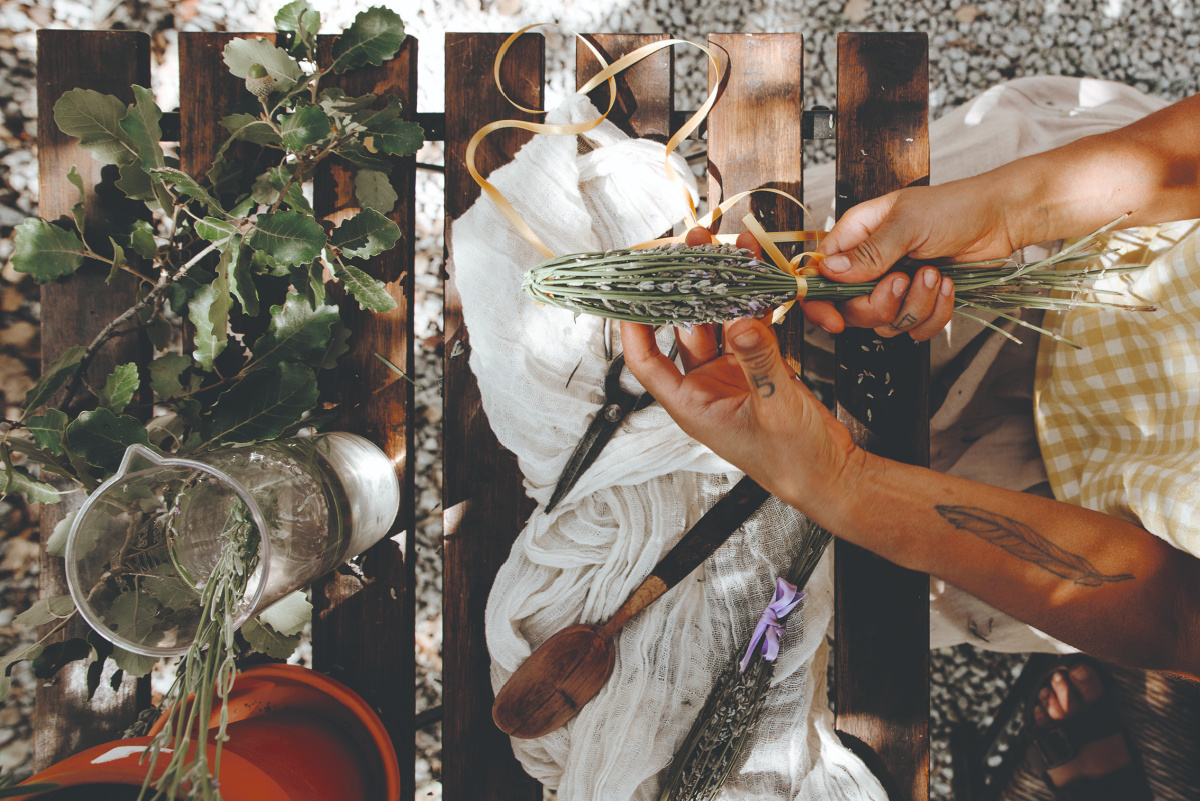
bunch of freshly cut lavender sprigs with stems at least 20 cm (8 in) long: use an odd number of sprigs (19 is ideal, but any odd number over 15 will work).The Woven Lavender Wand
200–250 cm (78–98 in) of satin ribbon in a colour of your choice
scissors
spoon (optional)
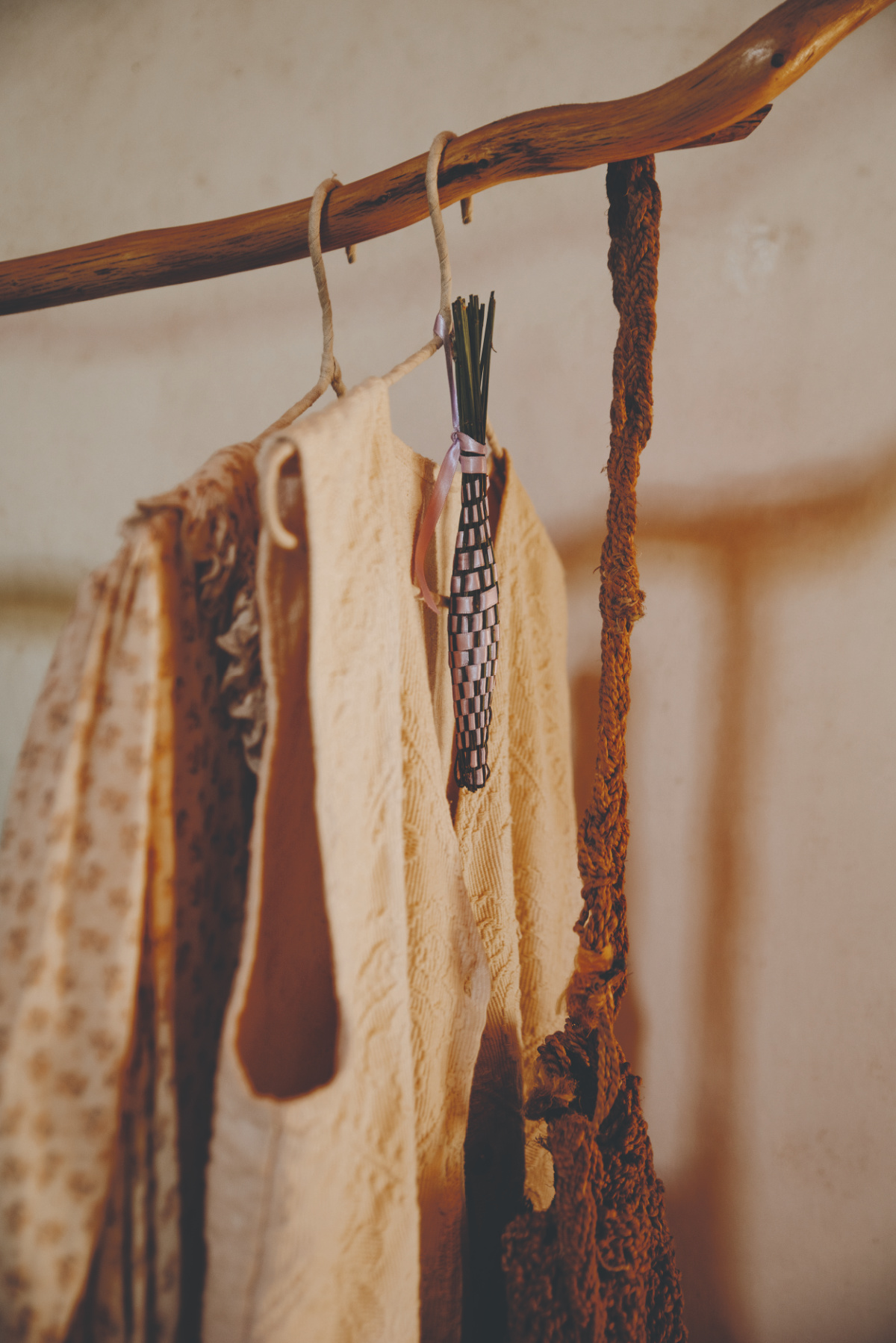
The stems may release oils during the first few weeks after weaving, so it’s best to hang your wand in a closet, for example, before placing it in a drawer among your clothes to avoid any staining.
These wands will easily keep their scent for a couple of years, with the more elaborate one retaining it the longest. To release the natural oils and refresh the fragrance over time, you can gently roll the wand between your hands.
Purchase the full-length book here: The Wild Craft by Catrina Seixas

For more ways to use lavender, see:








